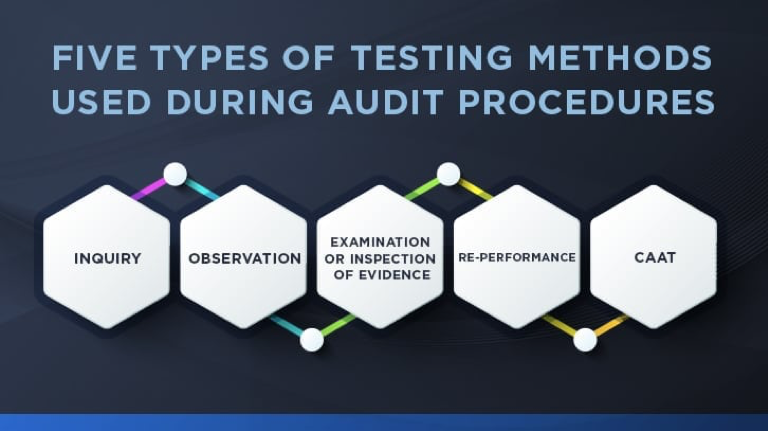CA Audit Procedures
Almost all type of organizations record each and every financial transaction that
occurs during the course of business and on the basis of these records, they prepare
their financial statements.
When the financial statements of an organization are examined and reviewed to make
sure that all the records are fair and free from any error and misrepresentation,
it is called financial audit. There are two common types of audits in an
organization,
one is called an internal audit and other is called external or statutory
audit.
Internal audit is conducted by an organization’s own employees in a view to improve
and
implement internal controls and the effectiveness of risk management. In most cases,
there is no obligation on the qualification of an internal auditor.
External or statutory audit is mainly concerned with the audit of the organization’s
financial statements for a specific period which mostly consist of one financial
year.
Statutory audit is carried out by a chartered accountant who has the required
practical
experience and skills. The external audit is carried according to the rules and
procedures
defined by the International Auditing and Assurance Board (IAASB). In this article,
we
will discuss the audit procedures used by a chartered accountant to conduct an audit
of an
organization’s financial record.
Overview of Audit Procedures
Once the audit objective, scope, and approach are defined, the next step is to plan
the
techniques and process which will be used by the auditor to obtain conclusive audit
evidence to support his final opinion at the end of the audit process. The term
audit
program and audit procedures are sometimes used in the same sense. In most of the
audit
firms, audit procedures are defined by an experienced partner or approved by a
senior
member of the firm to assure that all the potential risks are addressed in the
procedures.
Audit procedures may vary from organization to organization depending on the size
and
internal controls implemented. The common audit procedures used by auditors requires
strong analytical and observation skills. Following is the list of common audit
procedures:
- Analytical Procedures
- Inspection
- Observation
- Recalculation
- Inquiry

Let’s discuss them one by one below.
1. Analytical Reviews
Analytical procedures are carried out by the auditor through the whole audit
process.
This procedure is an analytical examination of an unusual transaction by the auditor
and upon these analytical findings, the auditor decides whether to perform any other
procedure or not.
The main purpose of conducting analytical procedures is:
- To identify high-risk areas in the business
- To understand the business and get knowledge about the industry
- To assess the consistency in the financial record
2. Inspection
Inspection is the procedure through which the auditor performs an examination of
financial documents and verifies the whole process which results in the production
of that document.
Inspection of financial documents is the main part of the audit program. For
example,
the auditor wants to inspect a payment voucher which is produced against a payment
issued to a vendor. So, the auditor will inspect all the supporting documents like
vendor’s invoice, Goods received note, etc. and will confirm that the goods are
actually received by the company and whether or not all the company’s SOPs are
followed in the process.
3. Observation
Gathering data and understanding of the business process to obtain audit evidence by
using strong observation skills by the auditor is called observation procedures. In
these procedures, the auditor assures the correctness of procedures carried by the
company employees. Sometimes the auditor may collect his own record to cross-check
the
figures at the end of the process.
For example, the auditor can join the stock taking team and observe the process of
stocktaking and verify whether all the SOPs of the company are carefully followed
by the company’s employees or not.
4. Recalculation / Performance
It is a type of audit procedure performed by the auditor to verify the figures
calculated by the company employees.
For example, the auditor can calculate the total salaries and wages of the company
and
cross check with figures provided in the company’s financial statements.
5. Inquiry
If there is something that needs to be explained further, the auditor uses inquiry
procedures to get information about the matter from the company’s employees and the
management.
The inquiry process is going through the entire audit process. It is performed in
the
planning stage where the auditor gets information about the company’s business
operations
and recordings of the processes for transactions.